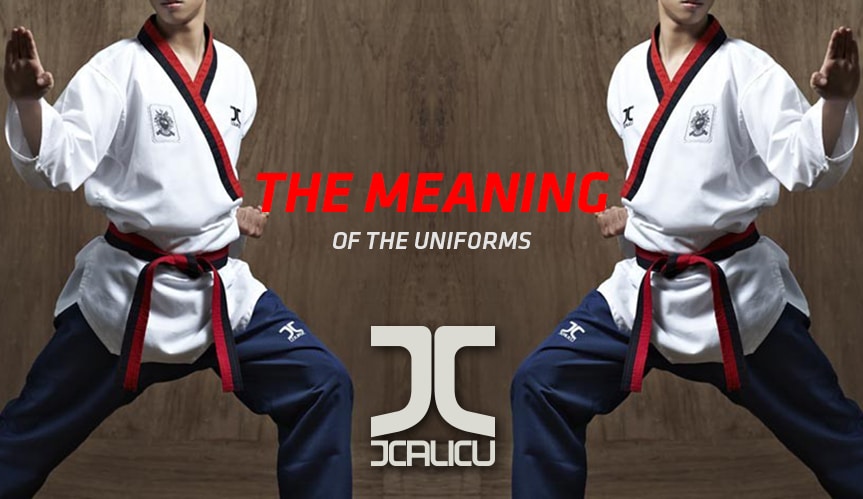As taekwondo grew popular schools began to open all over the world which meant it was necessary for students to have a uniform that distinguished them and allowed for them to show what martial arts they practiced while at the same time gave them an attire that provided the necessary comfort for it.
While other martial arts use only belts to show the grade and advancement of its practitioners, taekwondo has gone one step further. Knowing that as you advance so grows your level of knowledge of this ancient martial art including the Poomsae (sets of movements that grew complex the higher you go in your training), it was decided that uniforms also show the grade a practitioner has achieved (especially useful in competition more than in training).
A little bit of history
First and foremost let us understand how Taekwondo uniforms work; a normal white uniform is composed of two parts: the dobok or top which can be either white or black depending on choice and grade, and the pants, which because of their similarity to the hanbok have adopted this name.
The meaning of Dobok (the top and most important part) is composed of two words: Do which means way and bok which goes for clothing, combined you can call it the “clothing for the way” meaning the clothing used to learn the way of the taekwondo.
Now it is interesting to mention that today, there are two types of uniforms per se, the traditional and close to the keikogi which is a Dobok that has a V-shape in front and a newer style used by the WTF (World Taekwondo Federation) which is completely closed on the front.
Both are approved and can be worn either for training and competition but subjected to the rules of each school.
Grading on the Dobok
It is a certainty that by now you know that the belt goes over the Dobok, this is the typical way in most martial arts, but there’s a variation in taekwondo when you reach the final steps in your training (red and black belt).
In Taekwondo the taekwondo uniforms can have, in the V-neck the color of your grade with either a black or red stripe, at the same time as your keikogi can be black when you reach that belt.
In some case, you can also wear golden keikogi which show you’re a master with not just a black belt but also a dan on it which is even a higher hierarchy.
Like we stated before this is mostly used in competition to allow judges and officers to easily identify the grade of those performing, especially when it comes to Poomsae where the complexity and perfection of the forms are closely judged and qualified.
You will also notice that the stripe on the taekwondo uniforms almost reaches the belt because in a certain way it remarks the belt and grade you have achieved and gives you a better look while competing or when leading a practice. Also if you are a judge it will leave no doubt to the participants that you are a master before them.

